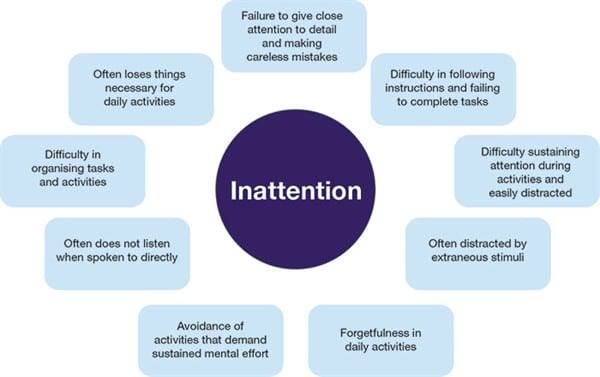 This article continues the series focusing on the seemingly-insane things that some first responders do while operating in high-stress, high-consequence environments. Oftentimes, the individuals trying to make sense of these behaviors are quick to judge those on the sharp of the decision by saying things like: “They weren’t paying attention?” or “How could they not see that?”
This article continues the series focusing on the seemingly-insane things that some first responders do while operating in high-stress, high-consequence environments. Oftentimes, the individuals trying to make sense of these behaviors are quick to judge those on the sharp of the decision by saying things like: “They weren’t paying attention?” or “How could they not see that?”
Lessons in neuroscience affirm how easy it is for responders to not see bad things that are happening right in front of them or to see bad things without comprehending what the information means (see Explanations for Situational Awareness Insanity – Part 3 for an in-depth discussion on comprehension). Let us explore the challenges of attention deficit.
Attention Deficit
 This discussion does not focus on attention deficit disorder, though surprisingly, that is a topic for which I receive many questions about during my programs. Rather, we are talking about what causes you (sans the formal diagnosis of ADD) to have so much difficulty paying attention to your environment – especially while being in an environment that can kill you. [tweet this] As we explore some of the explanations for this seemingly-insane behavior, it is my hope to provide some explanations, rooted in neuroscience, for how it happens.
This discussion does not focus on attention deficit disorder, though surprisingly, that is a topic for which I receive many questions about during my programs. Rather, we are talking about what causes you (sans the formal diagnosis of ADD) to have so much difficulty paying attention to your environment – especially while being in an environment that can kill you. [tweet this] As we explore some of the explanations for this seemingly-insane behavior, it is my hope to provide some explanations, rooted in neuroscience, for how it happens.
Tunnel Vision
 Many have been taught about tunnel vision in a psychology or safety class, but few have ever really experienced it. Oftentimes when operating in a stressful environment a person will miss seeing or comprehending important clues or cues that indicate the presence of danger. Or they may simply miss seeing or comprehending other things that are, not necessarily, indicators of danger.
Many have been taught about tunnel vision in a psychology or safety class, but few have ever really experienced it. Oftentimes when operating in a stressful environment a person will miss seeing or comprehending important clues or cues that indicate the presence of danger. Or they may simply miss seeing or comprehending other things that are, not necessarily, indicators of danger.
When this occurs, the person often offers the explanation that they were suffering from “tunnel vision”. Simply missing clues or cues is not an automatic indicator that tunnel vision was the affliction. [tweet this]
I have interviewed hundreds of people who have experienced near-miss and casualty events and done my best to learn every possible lesson about why and how things go wrong in the moment of making critical, often life-and-death, decisions. When challenges with situational awareness are implicated by the interviewee, the explanation of tunnel vision is a favorite.
Tunnel vision is an involuntary narrowing of the visual field down to a very small geographic area. That area has been described as ranging from a few feet in diameter to a few inches in diameter.
One interviewee described his tunneled vision as if he were looking through the tube from a roll of paper towels (listen to SAMatters Radio show episode #9, the interview with close call survivor, Captain John Wright). Captain Wright was in a difficult spot inside a structure fire and vividly described, among other situational awareness barriers, his affliction of tunneled vision.
When suffering from stress-induced tunneled vision, the ability to capture, process, comprehend, and recall critical clues and cues can be impacted, which challenges the accuracy of situational awareness. You simply cannot be aware of your environment when the majority of your visual field is being proverbially “blacked out”.
Unfortunately, tunneled vision is not an affliction easily controlled because it results from a series of chemically induced reactions, that are designed to help narrow your focus down to the one area, where the brain perceives the greatest threat to existence exists.
Task Fixation
 Task fixation is often confused with tunneled vision yet it arises from a completely different set of circumstances. To perform a task – especially a physical task – it requires you to pay attention to the task. The more labor intensive the task (or the more novel the task), the more attention is required.
Task fixation is often confused with tunneled vision yet it arises from a completely different set of circumstances. To perform a task – especially a physical task – it requires you to pay attention to the task. The more labor intensive the task (or the more novel the task), the more attention is required.
As attention is given to the task, it is easy to lose awareness of the bigger operational picture. In other words, there is a lot of information (clues and cues) available in the larger environment surrounding you while you are performing your (micro-level) hands-on task. However, when all of your attention is on the task, it is easy to lose sight of how important the bigger operating picture is.
The lesson was learned, albeit some would purport the hard way, in aviation as technology was introduced into cockpits. This technology provided pilots with massive amounts of data on electronic displays. Trying to navigate the displays required a learning curve for pilots – coupled with the fact that some pilots simply did not trust the newfangled technology. This caused some pilots to go “heads-down” on the technology and completely lose awareness of the larger environment and other critical clues and cues. This contributed to some aviation incidents with less-than-happy outcomes.
Suffice it to say, when your attention or focus is on one task, while lacking an awareness of the larger environment and the critical clues and cues present that could indicate danger, your situational awareness will be eroded.
Mission Myopia
 Mission myopia should not be confused with tunnel vision or task fixation because, like the previous, it has its own set of factors contributing to flawed situational awareness. You are likely to suffer from mission myopia when you believe the mission is critical to desired outcomes (e.g., extinguish the fire…rescue the victims). If caught in a “mission is the only thing that matters” mindset, you can completely miss the presence of critical clues and cues indicating danger.
Mission myopia should not be confused with tunnel vision or task fixation because, like the previous, it has its own set of factors contributing to flawed situational awareness. You are likely to suffer from mission myopia when you believe the mission is critical to desired outcomes (e.g., extinguish the fire…rescue the victims). If caught in a “mission is the only thing that matters” mindset, you can completely miss the presence of critical clues and cues indicating danger.
But more importantly, you may choose to consciously IGNORE the critical clues and cues. I have interviewed many first responders who found themselves in a tight spot – and obviously they were able to get out of that spot and live to be interviewed – who told me they knew the conditions were bad…very bad…yet they remained loyal to the mission and plowed forward into the danger.
In the stories of many of those I interviewed were remorse that they chose to ignore the critical clues and cues of danger. Some suffered injuries. Others had colleagues who paid the ultimate sacrifice. In nearly every example, the “mission” the responders were committed to was never accomplished because the catastrophic outcome occurred prior to mission accomplishment. Looking back, the responders tell me the outcome was, in hindsight, predictable.
When questioned, some struggle to even provide a plausible explanation as to why they committed themselves to a predictably failed mission. Some offered explanations like “Making entry is what we always do,” or “I never gave any other plan of action a thought – I was single-minded”. Indeed, singled minded – Mission Myopic.
Chief Gasaway’s Advice
 I define situational awareness as a person’s ability to perceive and understand the information in his or her environment – with consideration for the passage of time – and then, in turn, being able to accurately predict future events in time to avoid bad outcomes.
I define situational awareness as a person’s ability to perceive and understand the information in his or her environment – with consideration for the passage of time – and then, in turn, being able to accurately predict future events in time to avoid bad outcomes.
To perceive your environment, you must pay attention to your environment. [tweet this] Perception allows nerves in the eyes, ears, nose, mouth, and skin to gather information and send that information into the brain for analysis. When your attention is impacted from tunnel vision, task fixation or mission myopia, your ability to capture and comprehend information will be impaired – and situational awareness will erode.
Remember, no matter what you are doing and no matter how bad the situation may appear to be, you are operating in a larger environment of clues and cues that form big-picture (or what I refer to in my classes as “incident-wide”) situational awareness.
Take time to look up and look around. Be inquisitive. Ask yourself questions like:
- How does the bigger picture fit with your understanding of what is happening?
- How might changing conditions impact how you complete your task?
- Are you going to be able to get your task completed safely before conditions overrun you?
- Does the mission fit the current conditions?
- Does it make sense to be doing what you are doing (or are about to do)?
- How does your micro-level mission fit with the broader incident-wide mission?
- How are the tasks being completed by others (or not being completed by others) going to impact you and your team?
Do not take your ability to form a macro-level (aka: big picture) awareness for granted. It requires conscious effort, especially when being impacted by the attention deficit afflictions discussed here. Macro-awareness can help improve your situational awareness because, when done consciously, it forces you to capture and comprehend critical clues and cues that might otherwise slip right past you.
Action Items
 Discuss a time when you, or someone you know, suffered from tunnel vision and share how it impacted situational awareness.
Discuss a time when you, or someone you know, suffered from tunnel vision and share how it impacted situational awareness.- Discuss a time when you, or someone you know, suffered from task fixation and share how it impacted situational awareness.
- Discuss a time when you, or someone you know, suffered from mission myopia and share how it impacted situational awareness.
- Discuss strategies you might use to will help develop and maintain incident-wide, big picture, or meta-awareness while operating in high-stress, time-compressed environments.
About the Author
Richard B. Gasaway, PhD, CSP is widely considered a trusted authority on human factors, situational awareness and the high-risk decision making processes used in high-stress, high consequence work environments. He served 33 years on the front lines as a firefighter, EMT-Paramedic, company officer, training officer, fire chief and emergency incident commander. His doctoral research included the study of cognitive neuroscience to understand how human factors flaw situational awareness and impact high-risk decision making.
_____________________________________________________

If you are interested in taking your understanding of situational awareness and high-risk decision making to a higher level, check out the Situational Awareness Matters Online Academy.
CLICK HERE for details, enrollment options and pricing.
__________________________________
Share your comments on this article in the “Leave a Reply” box below. If you want to send me incident pictures, videos or have an idea you’d like me to research and write about, contact me. I really enjoy getting feedback and supportive messages from fellow first responders. It gives me the energy to work harder for you.
Let’s Get connected
Facebook: SAMatters
LinkedIn: Rich Gasaway
LinkedIn: Situational Awareness Matters
Twitter: Rich Gasaway
Youtube: SAMattersTV
itunes: SAMatters Radio
Stitcher Radio: SAMatters Radio
Google Play: SAMatters Radio
iHeart Radio: SAMatters Radio
